Visual Connection: Resident Evil Umbrella Chronicles Vs Resident Evil 0, Remake and 3
March 27th, 2010
To prove my prior comments that Resident Evil: Umbrella Chronicles has a distinctively burn out appearance, it’s probably best to illustrate with examples. So, below are screens taken from the various chapters in Resident Evil: Umbrella Chronicles and the respective games they’re based upon. I found it tricky matching the screenshots room-for-room, but what I have gives a pretty decent approximation.
Resident Evil 0


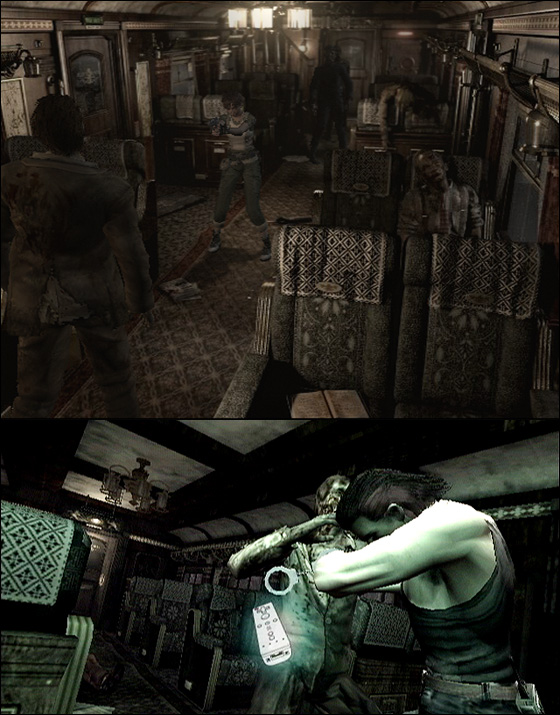
Resident Evil Remake
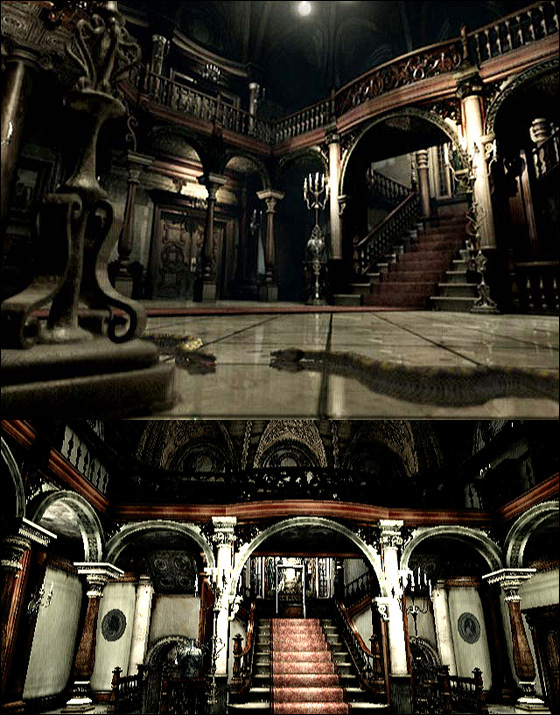

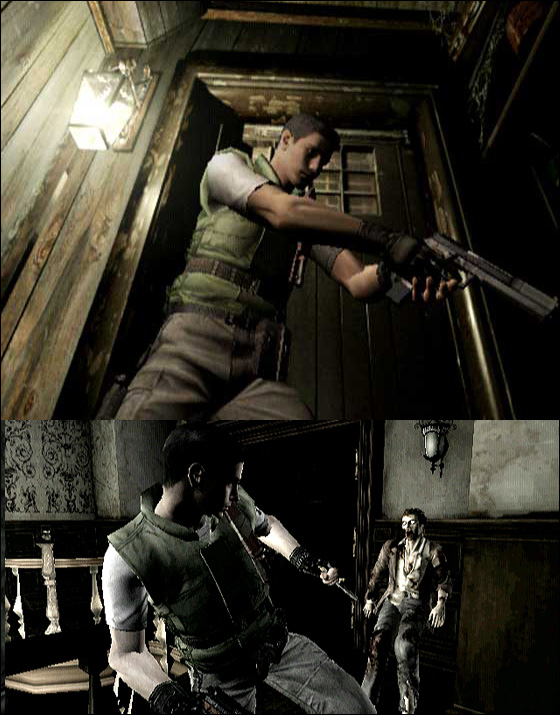

Resident Evil 3
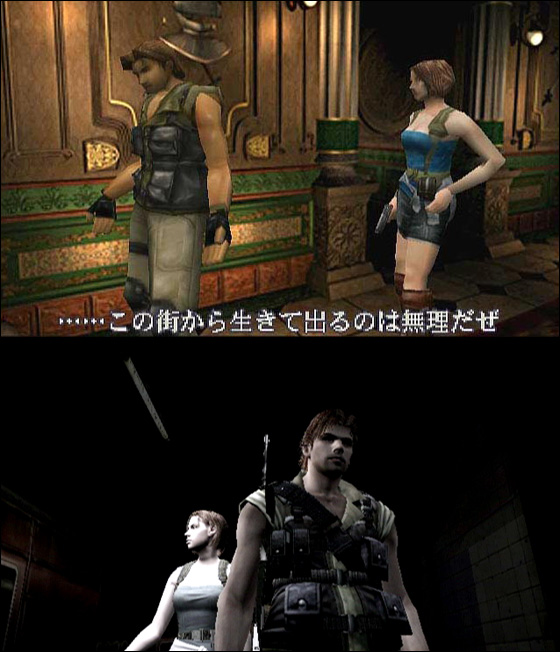

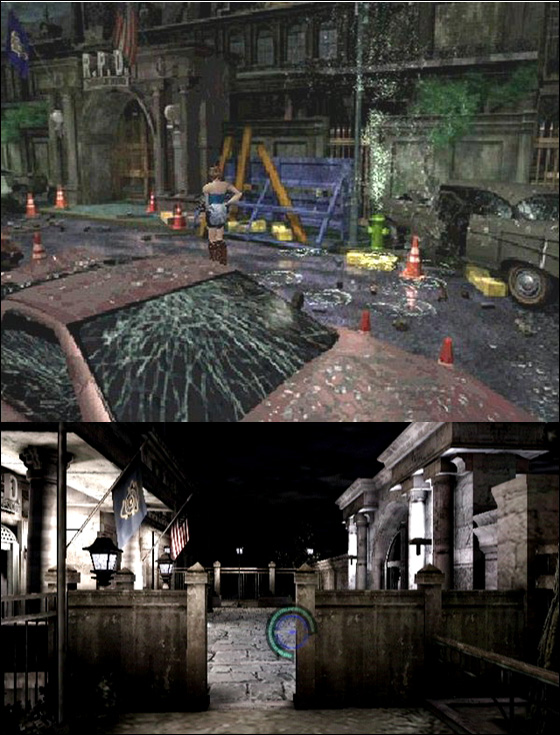
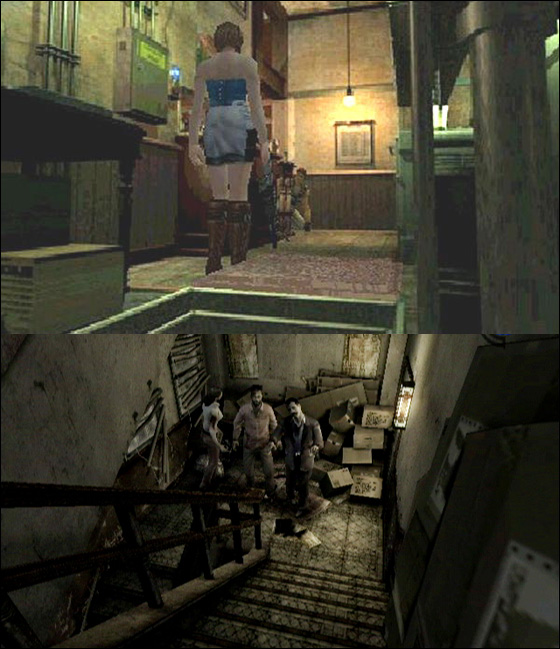
Resident Evil: Umbrella Chronicles – Side Commentaries
March 25th, 2010

Here’s everything I couldn’t add to what I said before. Some pretty substantial comments this time, unlike with Dead Space Extraction. So, dig in!
Faithful Enemies Types Stretched Thin
One of the unavoidable issues when adapting a survival horror franchise like Resident Evil into an on-rails shooter is the cast of enemies. The original Resident Evil games were rather sparsely populated, creating moments of quiet solitude which would enhance the ensuing scares. An action-intensive rail shooter, on the other hand, lives off its fodder, and as a result, the selective cast of bio-organic weapons are spread thickly and stretched thinly over the action to the cause of trite repetition. You’ll constantly confront the same slew of primates, hunters, dogs and zombies, because that’s all that the source material can afford. Balancing continuity with prior games and the enjoyment of the rail shooter is a tricky task, one that minor enemy variations (visually, in the form of attack patterns and/or weak spots) could have proved a sound solution. Another possible solution is a less action-intensive direction as with Dead Space:Extraction. This would be more akin to the original games, however, I have doubts that it would have worked quite as effectively.
Weapons Cache
Resident Evil: Umbrella Chronicles‘ weapon cache of 15 unique weapons is spread across 5 main weapon types: shotguns, machine guns, revolvers, explosives, and uhh more powerful explosives. Only two types of weapons are ever all that useful: shotguns and machine guns. Shotguns are effective at clearing enemies quickly in tense situations and managing hordes of zombies ready for the critical shot. The machine guns are good for stunning enemies and clearing destructible objects. They both also double as functional main weapons. The other three types are too high-risk due to their destructive power and limited ammunition. Frankly, you’d be stupid to both using these weapons. I did for the final segment of the Resident Evil 3 chapter and wasted 40 minutes on Nemesis. And anycase, why use a magnum to headshot a zombie when the default weapon is equally as effective? As I said in the previous post, the critical shot system practically makes these weapons redundant.

Burnt Toast
I’m surprised that in all I’ve read about Resident Evil: Umbrella Chronicles not one person has commented on the overcooked visual presentation. Don’t read me wrong, I do like the visual presentation, but it clearly has a very dark, raw look to it, often bordering on monotone. Comparing the recreation of the Spencer estate to RE Remake reveals a weaker textual hue, the wallpaper is the most noticeable difference between the two. Furthermore, compare Umbrella Chronicles to its bloom-lit sequel Darkside Chronicles and there’s a remarkable gain in detail and richness. Also, the sound of the Samurai Edge, the default gun, is abhorrent and contributes to the style.
Cheating the Default Configuration
Anyone who plays this game with just the Wii-mote is a dill. The default configuration is plain horrendous, over-mapping actions to the most prominent buttons, requiring the player to reload by shaking the pointer and losing some minor camera control from the nunchuck. The best way to play is to use the Zapper configuration, but not to use the mold. That way reloading won’t throw off your aim and switching between weapons is easy. It’s unbelievable that this control scheme was not accepted as default, or at least firing off screen made available for those not using it separately (as much as the rapid movement isn’t appropriate to the accuracy-focus of Umbrella Chronicles).
Clear Visual Indicators
It’s almost funny how much information you can display on a firing reticle, in the case of Umbrella Chronicles the amount of ammunition held in your gun and the type of shot based on the hover of your cursor. Four dashes appear in each direction around the central dot to indicate that you are shooting an object, be it a zombie or a some destructible object, which is really handy for scanning rooms for hidden files.
Adapting Survival Horror to the On-Rails Format
On Twitter, if I recall, I said that I’d like to explore the differences between playing Resident Evil 0 (which I’d recently completed) as a survival horror game and a rail shooter. I hate to disappoint you, but the differences are pretty self-evident. What is interesting are the cuts made to adapt the original titles into a rail shooter. Chapters from Resident Evil 0 are more or less a straight conversion with some of the solo bits chopped out and re-thinkered, the other two games however are heavily redone. While it has been some time since I played Resident Evil 3, I don’t recall a hefty majority of the locations, supposedly much of the layout of Raccoon City was adapted from the Outbreak games which were made by the same developers. Nemesis also makes his appearance at the start of the third and final act, so the order is completely muddled and there is seemingly no intermission for when Jill is knocked out. The original mansion incident is more faithful, but at the same time, feels like a remade adventure where Chris and Jill’s story is meshed together (there’s always two players together and they are never apart, this justifies the co-op). Only purists are likely to complain however, and all of the adjustments and cuts are understandable.
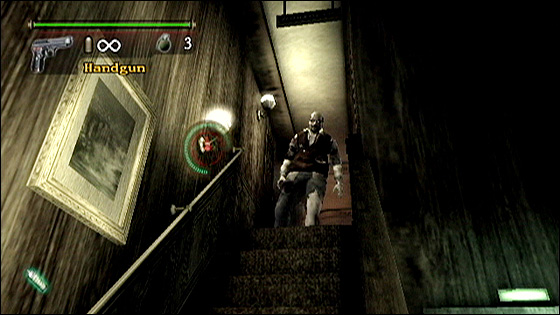
An Added Word on Cannon
Just as a rider to my comments above, the Red Queen computer system, as seen in the new Umbrella Ends chapter, was actually from the Resident Evil movies, and then we have dilemma. Capcom has denied the Resident Evil movies from ever being a part of cannon, yet, right here, Capiva have created a thread. Interesting to ponder.
Being Reasonable with the Game’s Intents
I was originally planning on writing an article taking another swipe at the enthusiast media’s silly criticisms of this game, but somehow I couldn’t find enough reputable sources talking unfounded trash to fill an entire article, so I will just talk generally to eschew any accountability. There are two comments used to discredit this title which have really frustrated me: this is not a “proper” installment in the franchise and there’s no Resident Evil 2, waaaaaahhhh! People, we need to judge this/any game on what it’s trying to do and not what it isn’t. Just because Umbrella Chronicles isn’t a new 3rd person installment does not make it a bad game. Umbrella Chronicles is a great stopgap for fans to do their homework and experience the original games in a new format, or, alternatively, as a point of entry for new players. In fact, I think that Umbrella Chronicles fits in quite well with Resident Evil 4: Wii Edition and the Gamecube remakes and ports—anyone can get their Resident Evil fix (minus RE5) on the Wii, and that’s pretty awesome.
Widescreen, Dammit!
This game is the first title in my collection to have mandatory, forced widescreen. There doesn’t seem to be any way to play in standard box-TV view, and that kinda makes me angry since I have a nice, box-TV at home. One of those decently-sized flatscreen models that went cheap as HDTV and all that rubbish was coming into the market.
Resident Evil: Umbrella Chronicles – For and Against the Critical Hit
March 23rd, 2010

One of the most contentious aspects of Resident Evil: Umbrella Chronicles is the targeting of critical, insta-kill shots. It’s understandable why this mechanic has received such harsh criticism, most of it’s founded, yet despite all the hoo-rah, there are solid reasons to defend the seemingly wonky. I wish to present both arguments as I see it. Again, video is a good point of reference, pity I can’t capture any myself.
Targeting System Introduction
Resident Evil: Umbrella Chronicles employs a two-tier critical hit system. On hitting any enemy’s weak point, a white flash is emitted (think photography flash), when your cursor is pointed over a zombie’s critical weak point the reticle will blink red and on landing a hit a blue flash is emitted and the zombie dies instantly. Insta-kill, “critical” hits only apply to zombies or crimson heads and not to any of the other enemy types. The weak point target is the head, the critical hit target is their brains, located at the tip of the head.
For
- Being a little more specific and targeting the brain adds a layer of depth to the weak spot concept
- Using the brain as the insta-kill, critical hit target makes logical sense
- The inclusion of a second weak point forces players to be more methodical and strategic (particularly when confronted with a zombie up close, which then becomes a method of stunning and gunning for the insta-kill).
- In turn, this system pushes players towards playing for accuracy and not to just spam enemies
- And this ties in well with the hidden files, moments of gameplay where spamming bullets at destructible objects is encouraged. Overall, the critical hit supports RE: Umbrella Chronicles in being tidily organised and segmented
Against
- To balance the 2 types of hits (3 if you count body shots), zombies takes roughly 3-5 head shots to down, this destroys the pacing
- Including two types of critical attacks is just confusing
- The system works against commonly accepted norms, being: head shots equal death, and that zombies go down with head shots
- Zombie’s heads therefore seem to be made of metal or something
Only Applicable for Zombies and Crimson Heads
(I didn’t want to preempt myself here, but it was necessary to include it in the above point as well). Zombies are the only enemy type whereby this targeting system is applicable, every other enemy in the game (snakes, dogs monkeys, lickers, hunters, all boss battles, etc) dies instantly by shooting their weak spot with the default gun (this is not so much the case with the other weapons).
For
- Zombies are a mainstay of the series, so it’s only appropriate that they’re given generous air time (through the long time it takes to aim precisely for critical hits, and the fact that zombies necessitate the critical hit variable)
- The confrontations with zombies are the most tactical of the entire game, they allow players to move between attacking and stunning (zombies in preparation for a critical hit) states
Against
- Presence of zombies become far too overbearing
- It’s also repetitive to be constantly met with the same enemy type
- Sequences with a mob of zombies act as pockets of slower gameplay (as the player tries for precision), this creates a wave of inconsistency throughout the experience
- Logically it doesn’t make much sense that the targeting rules in regards to zombies don’t apply to the other enemy types
Only Achievable with One Gun
I almost preempted this point too. This system, which I’ve just elaborated on, applies mainly, but not exclusively, to the default gun (the Samurai Edge). With zombies, insta-kill shots (the ones which add to your tally at the end-of-level grading) can only be triggered with the Samurai Edge. With other enemies though, a hit to the weak spot with the Samurai Edge is an insta-kill, but with other weapons, this isn’t always the case.
For
- Again we’re seeing a construction of rules which invite the player to be strategic, since only one gun can land a critical hit, it’s important that the player use the other weapons to aid in landing that critical shot, whether it be through stunning enemies or clearing non-zombie distractions
- Since the Samurai Edge has unlimited ammo, the targeting system doesn’t privilege those with a stockpile
- If any weapon could cause a critical hit, then obviously the rapid-firing weapons would reign supreme over the entire game, so it’s best to let the default weapon grant this power
Against
- Further unnecessary confusion, not only do critical hits only apply to zombies, but with use to a certain gun as well
- For players concious of critical hits, this design makes the selectable weapons cache partly redundant
Closing Statements
For
The dual layered critical hit system works to give Umbrella Chronicles more depth and strategy. Without the restrictions to enemy and weapon types, players would simply rely on a machine gun to spam-critical-hit their way through the title. Instead, Umbrella Chronicles disposes of norms to create a rich shooting system which encourages strategy and accuracy over random blasting.
Against
Resident Evil: Umbrella Chronicles‘ critical hit system is a non-unified one, and illogical at that. Zombies and the default gun are heavily favoured by way of establishing this system through the critical hit variable, and play therefore suffers from repetition. The other types of guns are also made redundant by this system. Furthermore, Umbrella Chronicles breaks the accepted norm that zombies die on head shots.



 Game Design Companion: A Critical Analysis of Wario Land 4 - $7.99
Game Design Companion: A Critical Analysis of Wario Land 4 - $7.99 Level Design: Processes and Experiences
Level Design: Processes and Experiences Speed Boost: The Hidden Secrets Behind Arcade Racing Design - $5.99
Speed Boost: The Hidden Secrets Behind Arcade Racing Design - $5.99 Adventures in Games Analysis: Volume I - $5.99
Adventures in Games Analysis: Volume I - $5.99







